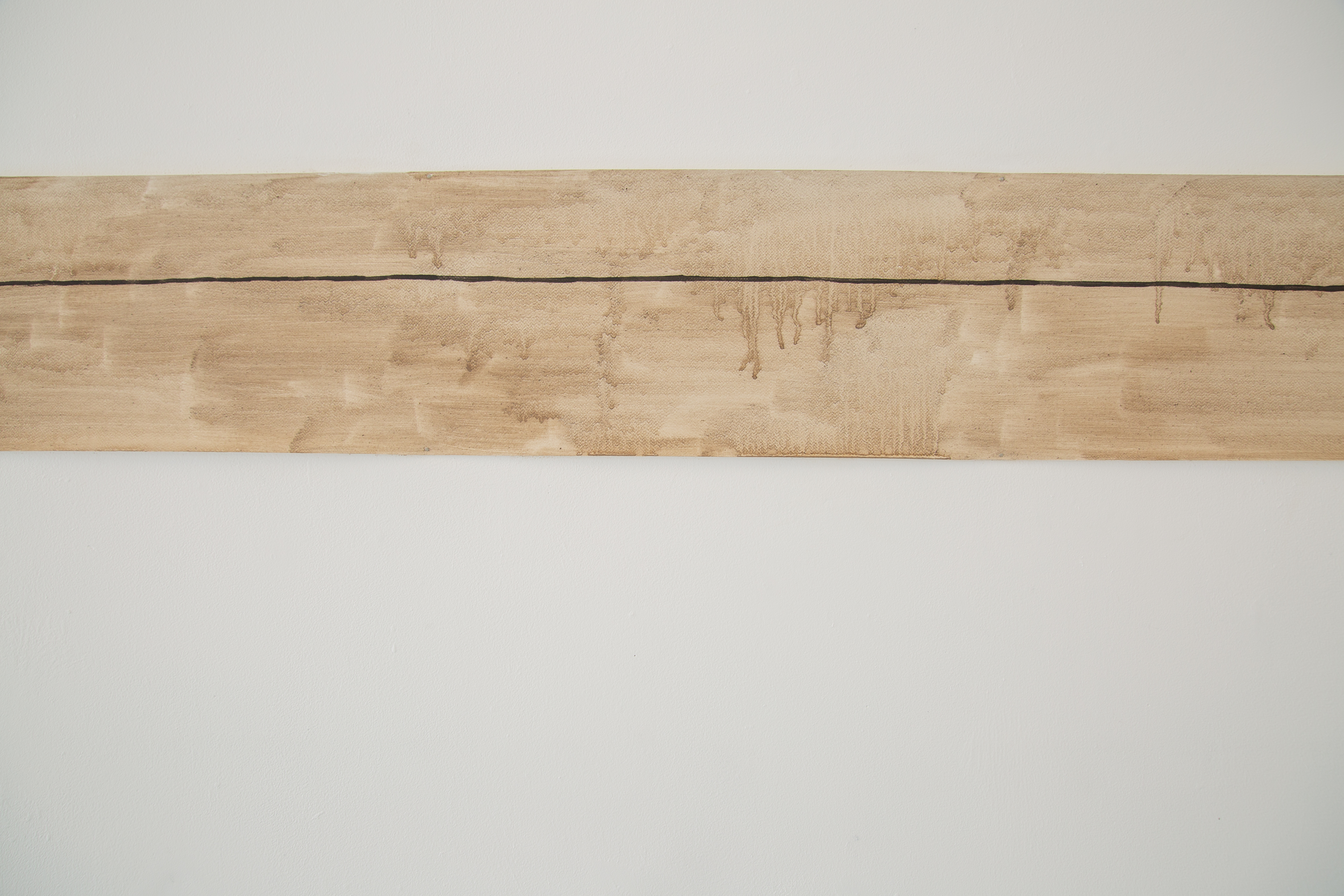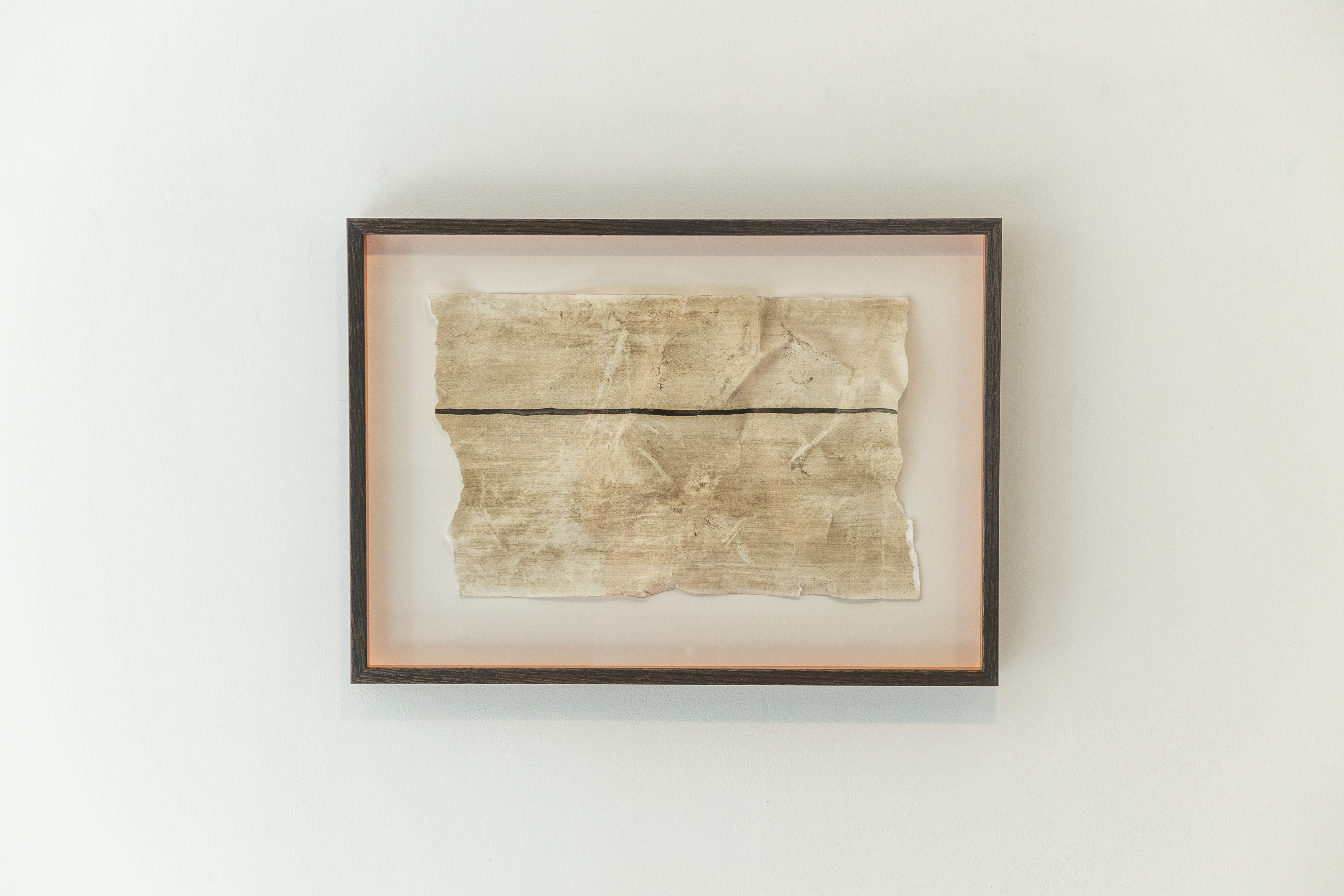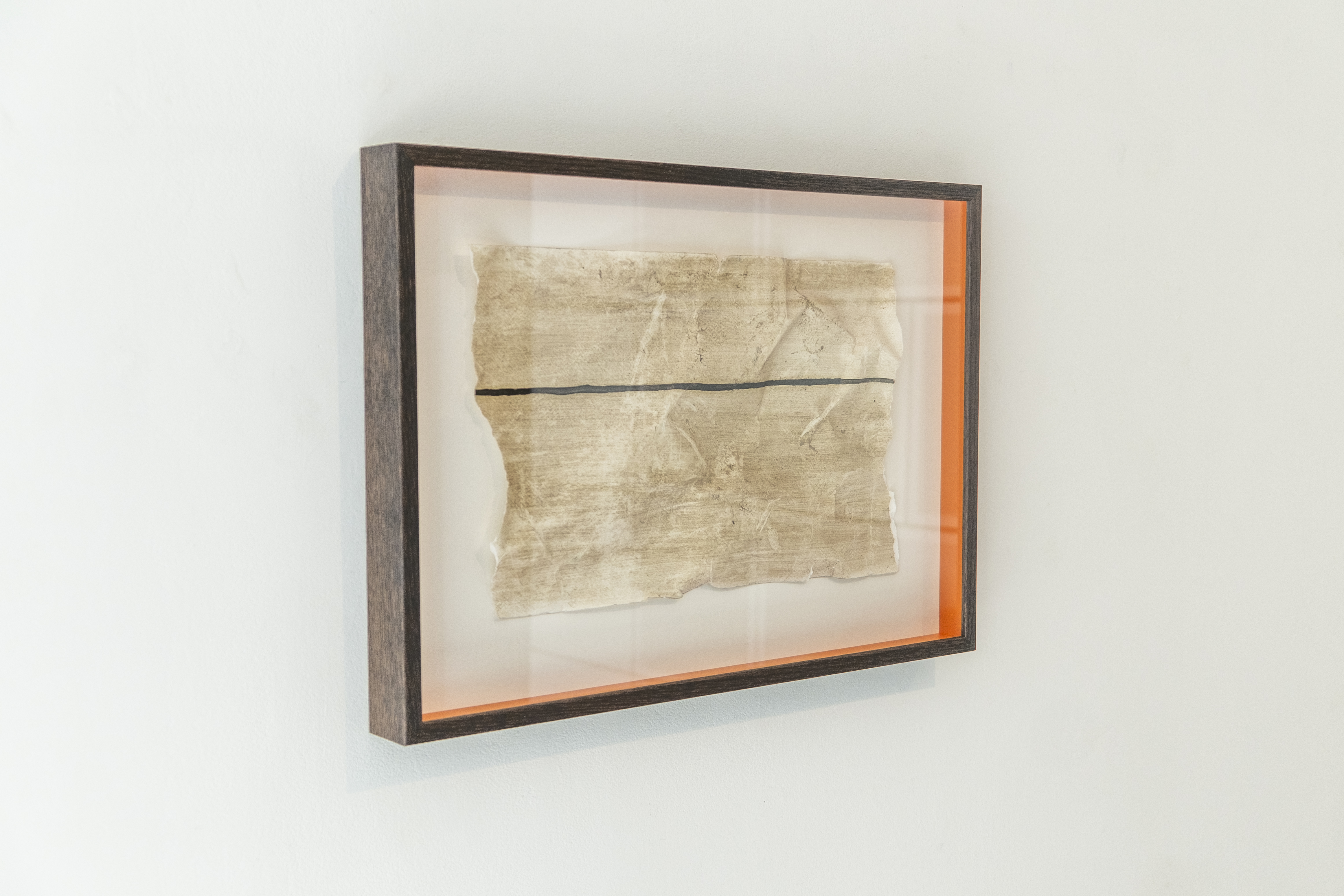stulp
verb
1. (UK, dialect, Middle English) the act of marking a boundary
whenua pigment watercolour (mud from Boggy Pond, Wairarapa Moana) and oil (willow charcoal) on paper, 25 x 1000cm









Stulp is a work that has undergone multiple transformations that embody the collaborative processes of making in my practice. Initially made as a 10m long panoramic work on paper, it was painted with watercolour made from mud at Boggy Pond. The paint application on the paper subtly transitions from left to right, symbolizing the passage of time and the gradual changes within the wetland ecosystem. This fading effect also mirrors the drying and draining of the wetland in reverse; as more water is mixed with the paint, it becomes lighter in color, with the pigment and sediment gradually fading.
A significant element of stulp is the thin black line that marks the horizon, created using oil paint made from willow charcoal – an invasive species present at Boggy Pond. Positioned higher than the viewer's eye level, this horizon line reflects the perspective of standing within a wetland, emphasizing it as a landscape's lowest point. It also symbolizes the straight lines that humans draw across natural environments, in efforts to section off and enclose, whether for conservation efforts or agricultural purposes, highlighting the ongoing human-nature interactions and interventions in landscapes.
The work’s title “stulp” is a word that has largely faded from modern English usage, chosen deliberately to revive a sense of connection to natural environments that are increasingly distant in Western societies. The making of stulpinvolved walking the perimeter of Boggy Pond to both understand the wetland as an entity, and to understand its containment. This boundary line, while crucial for protecting and conserving the wetland ecosystem, also defines what is considered "wild" in contrast to land designated for profit-driven purposes. The line dictates where culture and nature are separated from each other.
The panoramic format of stulp draws inspiration from the popularity of panoramic landscape paintings in 19th-century Europe. This format was often used to depict dramatic landscapes and battle scenes, and instead of creating distance from a “sublime” nature, panoramas immersed the viewer into the landscape.
The return of stulp to Boggy Pond, where it was ravaged by the wind, symbolizes the collaborative cycle of making, transforming, and remaking with the wetland environment, underscoring the ongoing dialogue between human and more-than-human creativity.
A significant element of stulp is the thin black line that marks the horizon, created using oil paint made from willow charcoal – an invasive species present at Boggy Pond. Positioned higher than the viewer's eye level, this horizon line reflects the perspective of standing within a wetland, emphasizing it as a landscape's lowest point. It also symbolizes the straight lines that humans draw across natural environments, in efforts to section off and enclose, whether for conservation efforts or agricultural purposes, highlighting the ongoing human-nature interactions and interventions in landscapes.
The work’s title “stulp” is a word that has largely faded from modern English usage, chosen deliberately to revive a sense of connection to natural environments that are increasingly distant in Western societies. The making of stulpinvolved walking the perimeter of Boggy Pond to both understand the wetland as an entity, and to understand its containment. This boundary line, while crucial for protecting and conserving the wetland ecosystem, also defines what is considered "wild" in contrast to land designated for profit-driven purposes. The line dictates where culture and nature are separated from each other.
The panoramic format of stulp draws inspiration from the popularity of panoramic landscape paintings in 19th-century Europe. This format was often used to depict dramatic landscapes and battle scenes, and instead of creating distance from a “sublime” nature, panoramas immersed the viewer into the landscape.
The return of stulp to Boggy Pond, where it was ravaged by the wind, symbolizes the collaborative cycle of making, transforming, and remaking with the wetland environment, underscoring the ongoing dialogue between human and more-than-human creativity.